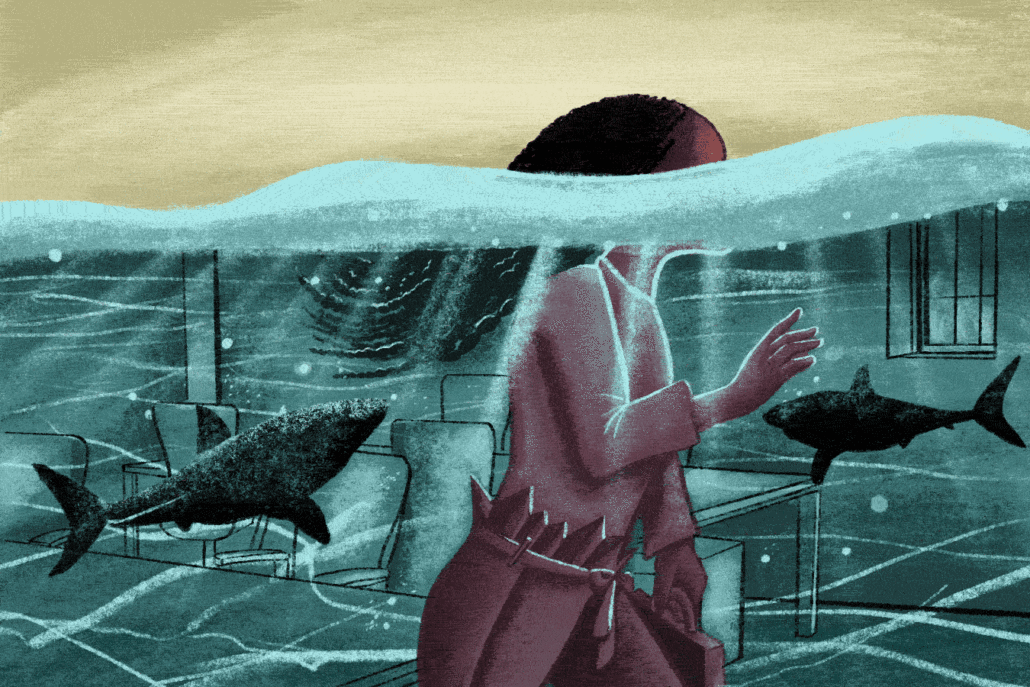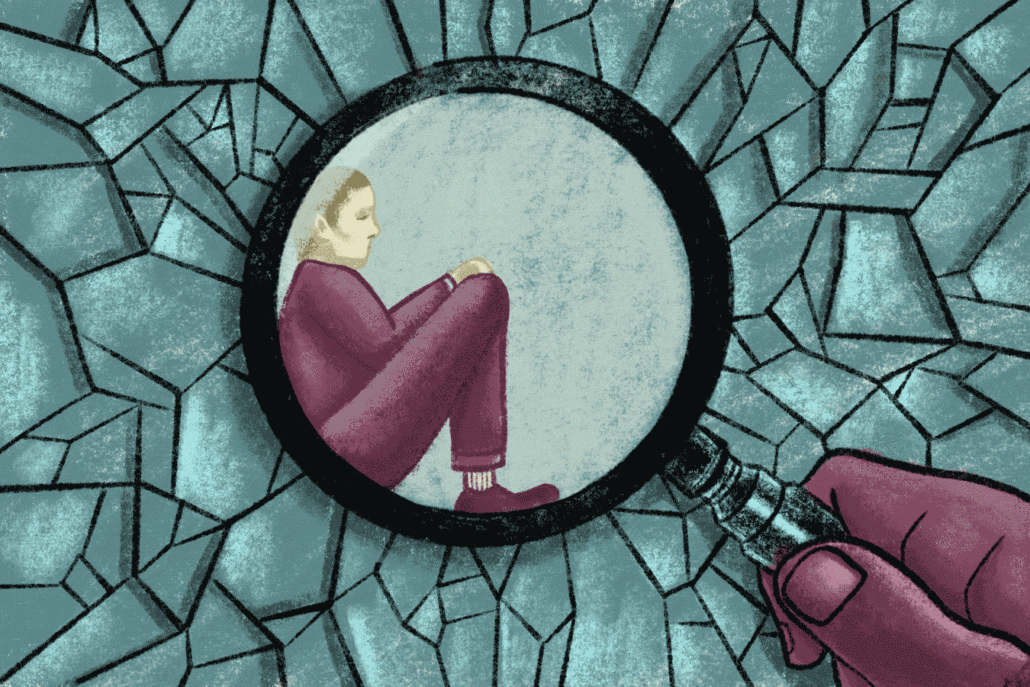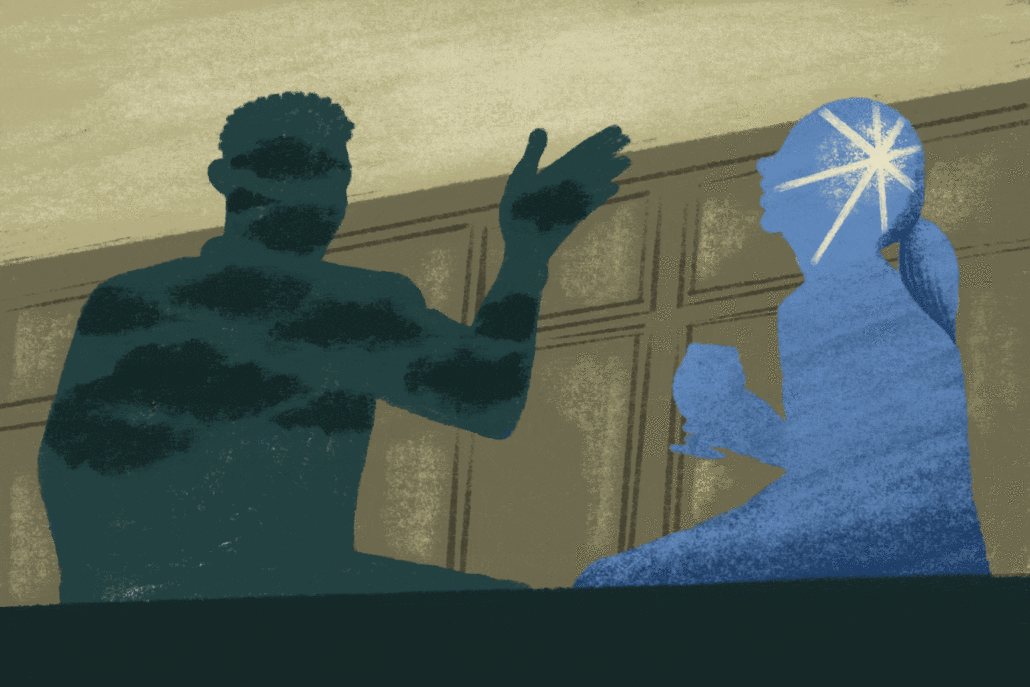
How to handle hurtful comments—whether you’re the victim or the offender
When Grace was four years old, a neighbour asked her, “What nationality are you?”
“I didn’t know what she meant, but I did recognize [the word] ‘National’ from the stack of magazines in my room, so I replied, ‘Geographic,’” Grace recalls, laughing.
That was the first time someone tried to figure out Grace’s ethnicity, but certainly not the last—as an adult, living in Toronto, she gets asked “Where are you from?” almost every day. She was born and raised in Canada, but when she replies, “I’m Canadian,” she often gets pushback: “No…where are you really from?” or even “But what are you?” Grace realizes this is likely meant as friendly conversation, but she still feels there’s an underlying implication: People who look like you don’t truly belong in this country.
When we think of discrimination, we tend to think of overt acts, like name-calling or physical bullying. But discrimination also pops up in this type of smaller, everyday interaction. Think about these comments:
“You have such a pretty face.”
“Oh, you’re so articulate.”
“Our next presenter is the lovely Suraya!”
Below the seemingly innocuous surface, each has another layer of meaning:
Your face may be nice, but your body is too big.
It’s surprising when a person of your race expresses complex ideas.
I value Suraya’s appearance, not her professional credentials.
Everyday acts of discrimination can be non-verbal, too: a server who doesn’t smile when greeting customers of colour; a passerby who pushes a person’s wheelchair without their consent; a shop clerk who follows certain customers around the store, silently implying that they’re shoplifters.
In 1970, psychiatrist and Harvard professor Chester M. Pierce came up with the term microaggression to describe the small and frequent insults that he observed white people delivering to African-Americans in everyday interactions. And microaggressions aren’t limited to race; they can occur wherever there’s a social power imbalance.
We all have multiple identities: our gender and race, as well as our religion, sexuality, physical ability, wealth, mental health, immigration status, body size and more. Our society values some traits more than others, resulting in power imbalances and discrimination. This is intersectionality, a concept developed by critical race scholar Kimberlé Crenshaw.
These power imbalances can be expressed in many forms, including microaggressions. A man can commit a microaggression against a woman, or a person from a majority racial group can commit a microaggression against a person from a minority racial group. But it’s equally possible for a wealthy, mentally stable woman to be the perpetrator of microaggressions against a housing-insecure, mentally ill man. In short, it’s complex.
What’s consistent is that microaggressions are inflicted by people who hold more social power, and they harm people who hold less power. The more socially undervalued identities you hold, the more often people will commit microaggressions against you.
Because they are so casual, microaggressions can be hard to identify and prove, which can lead victims to second-guess themselves and wonder if they’re being too sensitive, or if the awkwardness is their fault. Likewise, it can be easy for a microaggressor to be oblivious to the harm they’ve caused, or to become defensive when it’s pointed out.

But there’s real harm in these discriminatory interactions. The effects of experiencing frequent microaggressions are cumulative and can lead to what’s called “minority stress.” Symptoms can include decreased confidence, lower academic scores, higher rates of illness and even premature death.
With such serious outcomes, it’s arguable that microaggressions aren’t so “micro” after all. Their impact on happiness, productivity and health is huge. But we can all take steps to handle microaggressions, both when we receive them and when we commit them. Here’s how to deal.
Back-pocket responses for subtle attacks
It can be confusing when another person’s offhanded statement stings us. We may feel too flustered to know how to respond. Here are some strategies to try.
Respond in the moment. If you feel physically safe in the situation, there can be tremendous power in a quick response. The authenticity of acting in the moment can also mean a smaller response is all that’s needed to convey that someone overstepped. For instance:
“Smile!”
“Nope.”
“David, you’re one of the girls!”
“I dunno about that.”
“Good morning, darling!”
“Just Lillian is great, thanks.”
Even a quick, calm “Ouch…” or “Yikes…” can instantly make it clear that someone has crossed a line and give them a chance to step back.
Start with the “third story”; then say how you feel about it; then say what you want instead.
Begin your discussion with a simple, factual and uninterpreted recap of what happened, told in a way that both parties would agree with—what conflict mediators refer to as the “third story.”
When two people disagree, each person’s “story” of the conflict contains their own biases: “The kitchen’s always a mess because you’re a slob!” vs. “You’re always mad about the kitchen because you’re a neat freak!” Here, the third story might be, “We have different opinions about how often the kitchen should be cleaned.” Both parties would agree with this neutral framing, which helps minimize defensiveness.
Next, explain how the issue makes you feel—another point that can’t be argued. Finally, explain what you’d like instead—focusing on the future instead of the past can help move things forward.
For instance: “Earlier today you asked me to smile. (State the third story.) When people tell me what facial expression to have, it makes me feel like they’re trying to control me, or implying that I shouldn’t express myself unless my emotions are pleasant to them. (Explain your feelings.) I believe that people should be allowed to have whatever facial expression occurs naturally and I hope, going forward, that we won’t discuss mine. (Request future action.)”
Try the power of vagueness. It’s very powerful to explain social interactions in detail. Still, there will occasionally be times when we feel pressure to keep the peace. In these moments, it can be surprisingly effective to say something as vague as “Thaaaat feels a bit…” and simply trail off, without using a specific word.
Cite stats. If a more formal response is called for, say in a workplace, where handling microaggressions might as well be written into your job description, sometimes using statistics to support your point can help:
“Hi Brant! I recently read research showing that women’s job titles are often not referenced in their workplace introductions, while men’s usually are. I’d love it if we could buck the trend here. For this upcoming conference, when you introduce me, I’m hoping you will read out my attached bio and refer to me as ‘our director of marketing, Suraya Ali.’ Happy to chat further; thanks for understanding!”
Brush it off with a quick joke. If you’re being asked the dreaded “What are you?” question, make like Grace, who gives a humorous comeback to convey her more serious point: “You want to know what breed I am? Half poodle, half cocker spaniel!”
Go to bat for others—in a measured way. If you see someone committing a microaggression, you can be an ally by speaking up, as long as your goal is to improve the climate for everyone (read: make sure your reaction doesn’t cause a blow-up that makes the situation worse for the victim).

Tips for correcting your own mistakes
It’s uncomfortable to hear that we’ve inadvertently hurt someone. But the impact on the other person matters most, so it’s important to focus on them and not centre our own feelings if we’re called out. We could even count ourselves lucky that someone spoke up and let us know how we made them feel—the other person’s courage gives us a chance to grow. So how do we make amends?
Listen without arguing. It’s OK to give a small amount of context, but lengthy justifications of your intentions shouldn’t become the focus of the discussion. Concentrate on hearing the other person.
Beware of “tone policing.” The validity of a statement and the tone in which it’s presented are two completely separate things. Saying you’d be willing to listen if only you had been told in a nicer or calmer way is called “tone policing,” and it’s an unfair tactic that’s often used to silence marginalized speakers, who have justifiably strong emotions about topics that affect them.
Don’t mention your “credentials.” Having a sophisticated education or a diverse family doesn’t exempt us from having to reflect on our words and actions. We’ve all absorbed certain toxic societal values, and no matter what we’ve studied or who we love, we’re going to make mistakes.
If the interaction happened online, don’t delete it. It’s powerful to apologize and self-reflect in the same thread; it gives others the opportunity to learn and grow. Here’s an example:
“Mikaela pointed out that the wording I used in my post was disrespectful. On reflection, I agree, and I did some reading to learn more. I’m sorry I used that phrase, and I won’t in the future. Mikaela, thanks for telling me.”
Avoid weasel words like “if I offended you.” There’s no “if” when the person is explicitly pointing out the problem, and it’s a microaggression in itself to imply that the other person is overly sensitive.
Count how many times your response uses the words “I” or “me” versus “you.” A sincere apology centres the other person. If you describe your own beliefs and background more than you validate the other person’s experience, your apology may not feel meaningful to them.
Apologize simply and sincerely, and commit to doing better. “Grace, I asked where you’re from because I think you have an interesting look… but you’re right, that’s not a question I ask everyone, and yeah, it does kind of imply that you don’t really belong in Canada. Thank you for sharing that. I’m sorry I made you feel that way. I’ll be more thoughtful about that kind of question in future.”
Fill in the gaps in your own knowledge. Seek out activists, writers and scholars discussing the issues around your blunder. Now’s a great time to learn!
Recognize that an apology is not an eraser. People from marginalized groups shouldn’t be expected to forgive and forget constant harm. And unfortunately, by the time we’ve been called out for one microaggression, it’s very likely that we’ve also made a few more beforehand that weren’t even mentioned. Healing from microaggressions takes time. Or, depending on the situation, it might not be possible. But when mistakes happen, a sincere apology—and a true commitment to learn and improve—can really help reestablish goodwill.
Microaggressions happen because our society has instilled implicit biases in all of us. None of us can truthfully say we’ve never had a racist, misogynist, homophobic, classist or ableist thought. Our entire society was built on those inequalities, so of course we’ve internalized some of those values—so the goal of being “perfectly non-discriminatory” is unreasonable.
But the goal of “continual improvement” is a wonderful—and attainable—thing to strive for. And that can only happen if we are able to let go of our reflexive panic, defensiveness and retaliation when we’re called out, and to accept feedback, reflect on our beliefs and actions, make respectful and meaningful apologies—and move forward thoughtfully, so we don’t make the same mistake twice.